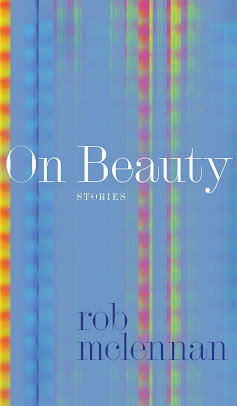André Le Nôtre (1613-1700) is often considered the father of the French formal garden. As the son and grandson of gardeners, he was born in the Tuileries and inherited a tradition already quite old. He took those traditions and adapted them to early Enlightenment thinking, incorporating contemporary mathematical and optical techniques, such as anamorphic perspective, to create gardens unprecedented in their appeal to both the eye and the mind.Compartmentalized into fragments holding small bunches of poems, corners of the manuscript, Swensen utilizes a fascinating nuance to such long lines, and provides an interesting counterpoint to the way gardens have been written, predominantly over the last few decades, in Canada at least, as works less governed by formal innovation than some kind of faux-pastoral, writing safe poems about Victorian-type creations that existed in direct opposition to the more vibrant wilds of the surrounding world. As much as Swensen understands these gardens to be constructions, so too, does she understand poems as constructions as well, holding a fine balance between constructed and organic structures, writing “If a garden is the world counted / and found analogue in nature / One does not become two by ever ending” (“IF A GARDEN OF NUMBERS”).
Versailles is his best-known work, but he played a crucial role in many other gardens, including those at Chantilly, Saint-Cloud, Sceaux, the Tuileries, and Vaux-le-Vicomte. This last was his first major commission, and it remains famous both for its perfection and for the scandal incited when it was unveiled for the king and his court in the summer of 1661. it was so grand that it threw Louix XIV into a fit of jealousy and convinced him that its owner, Nicolas Fouquet, who was also his superintendent of finance, must have been embezzling. Fouquet was arrested a few weeks later and spent the rest of his long life in jail.
That story and others inform some of the following poems, but none of them is necessary, or even particularly helpful, for reading the poems themselves. Similarly, a few proper names are mentioned here and there, not for their historical significance, but rather to underscore their bearers’ simultaneous roles as average people doing daily things, such as loving gardens.
André Le Nôtre lived a long and prosperous life. By the end of his career, he was consulted by royalty and aristocracy all over Europe, and his influence had spread even farther. And yet one of the things that is most remembered about him and most often repeated is that he was a great guy – modest, fun-loving, easy-going, and friendly – so somehow it seems fitting that, although he created all his gardens for members of the most exclusive classes, they are today almost all public parks. As if to underscore the irony, he phrase “le nôtre” means “ours.”
PARADISE
Certain traditions claim that man and garden cannot be separated,
or if and when they are, will neither still be visible, the inverse
of those twins that you never see in the same place at the same time. We disappear
through a single door, unrecognized
in the morning in the park, where we sit behind the early paper
and periodically declare I can’t believe
in the Middle Ages, they drew the news on cemetery walls. A long line
of bodies in silhouette that swayed. This too, they say,
is paradise because the sky touches the ground wherever the former has a hole in it called a hand,
espalliered mansions and guests in the millions.
The first public gardens in history were called oubliettes. As soon as you entered,
you were indistinguishable from the animals.
In a magnificent way, Cole Swensen’s poetry books exist as book-length essays or explorations through and around a particular subject, whether her current collection on Le Nôtre’s gardens, her Such Rich Hour (University of Iowa Press, 2001) that explored the calendar illuminations of a fifteenth-century book of hours, the Trés Riches Heures du Duc de Berry, or writing operatic forms through her collection Oh (Apogee Press, 2002). Years ago, Erin Mouré argued the merging of essay and poetry in a single form, and Swensen has managed to exist in the forefront of the blended genres, alongside, for example, Barry McKinnon’s investigations through Prince George, British Columbia in The Centre: Poems 1970-2000 (Talonbooks, 2004), CD Wright’s exploration of a women’s prison in One Big Self: an investigation (Copper Canyon Press, 2007), or even Nathalie Stephens writing the spaces between language, gender, translation and the body in her own ongoing works. Between the hours, what do we know exactly as being ours?
Marie Antoinette was last seen reading, and she didn’t look up. There wasn’t a revolution going on. Or maybe sewing, there was something pinned together, she was holding something together, or whatever was ever in her hands that was several then broke into separate. Marie. Is by definition bordering the sacred, which is the universal, so it was no longer her garden. So she refused to raise her eyes and watch two middle class women have a right to these rooms in which they should have frozen to death in an instant. Instead, they dusted. They drew a gloved finger across a mantel and propagated hemophilia. All my children running down the drain. There have been fewer centuries than I have ancestors, and any one of them could blind you by glancing your way she said what do you mean “nice”? I am not this dust, I am not just one
floating downstairs in the sun. One woman heard her turn a page, while the other heard a leaf rattle across the terrace, and turned to watch it, more out of idleness
than anything else. (“The Ghost of Much Later”)


No comments:
Post a Comment